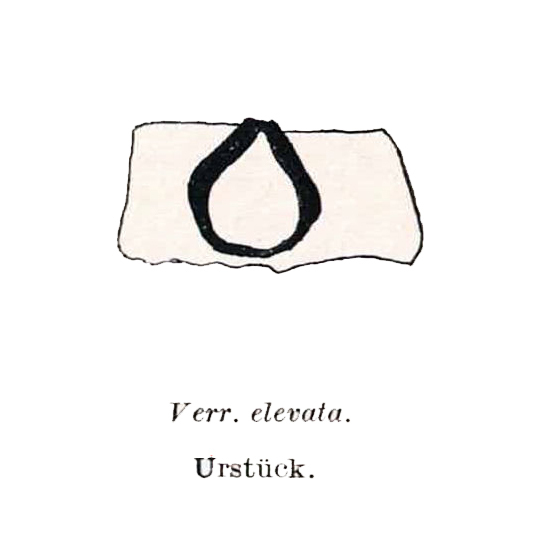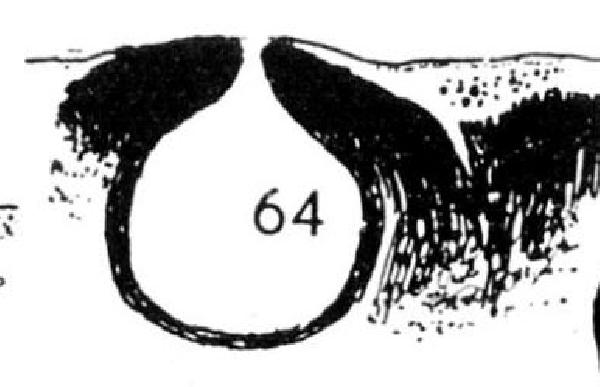Verrucaria elevata (Nyl.) Zschacke
Rabenh. Krypt.-Fl., ed. 2, 9, 1: 287, 1933. Basionym: Lithocia viridula var. elevata Nyl. - Verh. zool.-bot. Ges. Wien, 32: 172, 1882.
Synonyms: Verrucaria macrostomoides Servít
Distribution: N - Lig.
Description: Thallus crustose, episubstratic, 0.25-0.45 mm thick, rimose-areolate, brown to brown-black, greenish brown when wet, the areoles 0.5-0.8 mm wide, flat, smooth to uneven, acutely angular, often separated by wide fissures. Cortex very poorly developed; medulla white to brown (especially around the perithecia), but without a black basal layer. Perithecia black, 1-3 per areole, almost completely immersed, the apex 0.2-0.3 mm across, flat to slightly convex. Involucrellum black, 50-80 μm thick laterally, sometimes 80-100 μm thick near the ostiole, reaching to base-level; exciple globose to broadly pyriform, 0.2-0.4 mm across, the wall brown throughout; hamathecium of periphyses and periphysoids measuring 30-40 x c. 2 μm, interascal filaments absent; hymenial gel hemiamyloid, I+ red (I+ blue at very low concentrations of I), K/I+ blue. Asci 8-spored, clavate, I-, fissitunicate, the wall thickened above, with an ocular chamber, dehiscent by extrusion of an endotunica to form a delicate rostrum, Verrucaria-type. Ascospores 1-celled, hyaline, ellipsoid, 17-21 x (8-)9-12 μm. Pycnidia small, black, immersed. Conidia bacilliform, straight, 7-9 x c. 1 μm. Photobiont chlorococcoid. Spot tests: K-, C-, KC-, P-, UV-. Chemistry: without lichen substances.Note: a poorly known species, most frequent on calciferous schists, superficially similar to V. macrostoma, reported from a few localities in Central Europe and the Alps. For a good description see Breuss (2008).
Growth form: Crustose
Substrata: rocks
Photobiont: green algae other than Trentepohlia
Reproductive strategy: mainly sexual
Poorly known taxon in need of further study
Commonnes-rarity: (info)
Alpine belt: absent
Subalpine belt: absent
Oromediterranean belt: absent
Montane belt: very rare
Submediterranean belt: very rare
Padanian area: absent
Humid submediterranean belt: very rare
Humid mediterranean belt: absent
Dry mediterranean belt: absent

Predictive model
Growth form: Crustose
Substrata: rocks
Photobiont: green algae other than Trentepohlia
Reproductive strategy: mainly sexual
Poorly known taxon in need of further study
Commonnes-rarity: (info)
Alpine belt: absent
Subalpine belt: absent
Oromediterranean belt: absent
Montane belt: very rare
Submediterranean belt: very rare
Padanian area: absent
Humid submediterranean belt: very rare
Humid mediterranean belt: absent
Dry mediterranean belt: absent

Predictive model
 Index Fungorum
Index Fungorum
 GBIF
GBIF



